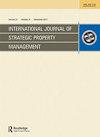规划策略对肯尼亚县政府绩效的影响
IF 1.7
4区 管理学
Q3 MANAGEMENT
International Journal of Strategic Property Management
Pub Date : 2023-09-28
DOI:10.53819/81018102t30112
引用次数: 0
摘要
一直以来,对县政府绩效的评估主要是根据待付账单水平、自有来源的收入、发展资金吸收率、启动和完成的基础设施建设以及工作人员的技能和能力发展。预算总监的县政府年度预算执行审查报告和年度审计长审计报告都提到了大多数县在这些领域的表现不佳。然而,有几个国家在资源相似的相同地区取得了显著的成果,这就提出了一个问题,即在不同资源分配过程中使用的规划战略的差异是否可以解释这些绩效差异。因此,本研究的目的是确定规划战略对肯尼亚县政府绩效的影响。有必要进行这项研究,以确定关键的县业绩指标,作为分配资源以确保有效提供服务的手段。本研究基于资源基础理论(观点)和麦肯锡7s框架。该研究在Migori县进行,分析的单位是102名县政府工作人员,包括直接参与资源配置战略的制定、实施、监测和评估的主任、主任和部门负责人。之所以选择Migori县作为研究对象,是因为它在绩效方面处于中位数,并且与其他县具有相似的特征。本研究采用描述性研究设计的人口普查方法进行。通过问卷调查收集数据。在Homa Bay县进行了试点测试,以测试数据收集仪器的可靠性。选择霍马湾县是因为它与米哥里县具有相似的特征。收集到的定量数据以表格、频率、平均值、标准差、图表和百分比的形式呈现。皮尔逊积矩系数用于检验关系的强度。然后使用简单回归和多元回归应用推理统计来检验自变量对因变量的影响。进行诊断试验以确定数据是否符合回归分析的阈值。 关键词:规划,战略,绩效,县政府,肯尼亚本文章由计算机程序翻译,如有差异,请以英文原文为准。
Influence of Planning Strategy on Performance of County Government in Kenya
The performance of county governments has always been primarily assessed in terms of the levels of pending bills, own-source revenue collections, development funds absorption rates, infrastructural developments initiated and completed, and staff skills and capabilities development. Both the Controller of Budget's County Governments Annual Budget Implementation Review Reports and the annual Auditor General's Audit Reports have cited underperformance by most counties in these areas. However, a few counties have achieved remarkable results in the same areas with similar resources, raising the question of whether variations in the planning strategies used in different resource allocation processes can explain these performance differences. The purpose of this study was therefore to establish the influence of planning strategy on the performance of county governments in Kenya. This study was necessary to identify key county performance indicators as a means of allocating resources to ensure effective service delivery. The study was based on the Resource-Based Theory (View) and the McKinsey 7s Framework. It was conducted in Migori County, with the unit of analysis being 102 county government employees, including chief officers, directors, and heads of departments who are directly involved in the formulation, implementation, monitoring, and evaluation of resource allocation strategies. Migori County was selected for the study because it is median in terms of performance and has similar characteristics to other counties. The study was conducted using a census survey with a descriptive research design. Data was collected using a questionnaire. A pilot test was conducted in Homa Bay County to test the reliability of the data collection instrument. Homa Bay County was selected because it has similar characteristics to Migori County. The quantitative data collected was presented in tables, frequencies, means, standard deviations, figures, and percentages. Pearson's Product Moment Coefficient was used to test the strength of the relationships. Inferential statistics were then applied using simple and multiple regressions to test the influence of the independent variables on the dependent variable. Diagnostic tests were conducted to establish whether the data met the threshold for regression analysis. Keywords: Planning, Strategy, Performance, County Governments, Kenya
求助全文
通过发布文献求助,成功后即可免费获取论文全文。
去求助
来源期刊
CiteScore
4.00
自引率
18.50%
发文量
23
审稿时长
15 weeks
期刊介绍:
International Journal of Strategic Property Management is a peer-reviewed, interdisciplinary journal which publishes original research papers. The journal provides a forum for discussion and debate relating to all areas of strategic property management. Topics include, but are not limited to, the following: asset management, facilities management, property policy, budgeting and financial controls, enhancing residential property value, marketing and leasing, risk management, real estate valuation and investment, innovations in residential management, housing finance, sustainability and housing development, applications, etc.

 求助内容:
求助内容: 应助结果提醒方式:
应助结果提醒方式:


